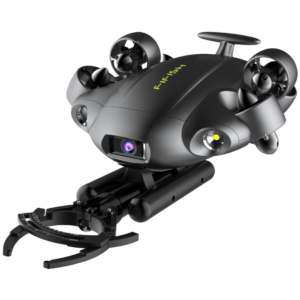UAV, UGV, and UWV - What it Means & How it Works
At Grips Robotics, we leverage the power of unmanned aerial vehicles (UAVs), unmanned ground vehicles (UGVs), and unmanned water vehicles (UWVs) to transform asset inspections, area surveys, and item delivery. Here's a brief overview of each technology and how they work:
Unmanned Aerial Vehicles (UAVs)
UAVs, also known as drones, are remotely operated aerial vehicles equipped with high-resolution cameras, sensors, and other advanced technology. These unmanned aircraft allow us to capture detailed aerial imagery, conduct inspections, and gather valuable data with precision and efficiency. By utilizing UAVs, we eliminate the need for traditional, time-consuming, and often risky methods of asset inspections, such as rope access or scaffolding.

Unmanned Ground Vehicles (UGVs)
UGVs are autonomous or remote-controlled vehicles designed to navigate and operate on the ground without the need for human presence. These versatile robotic systems are equipped with sensors, cameras, and other specialized equipment to perform a wide range of tasks. In the context of Grips Robotics, UGVs are utilized for ground-based inspections, surveys, and item delivery, enabling us to access areas that may be challenging or unsafe for human personnel.

Unmanned Water Vehicles (UWVs)
UWVs, also known as unmanned surface vehicles (USVs) or unmanned underwater vehicles (UUVs), are autonomous or remotely operated vehicles specifically designed for water-based operations. Equipped with sonar systems, cameras, and other marine sensors, UWVs allow us to perform inspections and surveys in maritime environments, such as offshore structures, ports, and other water-related assets. These vehicles enhance efficiency, accuracy, and safety in assessing underwater infrastructure.

The integration of UAVs, UGVs, and UWVs into our operations enables Grips Robotics to provide comprehensive, multi-dimensional data acquisition and analysis. Our team of skilled professionals utilizes specialized software and data processing techniques to transform raw data collected by these unmanned vehicles into actionable insights and reports. This empowers our clients to make informed decisions, identify maintenance needs, detect anomalies, and optimize their operations.
